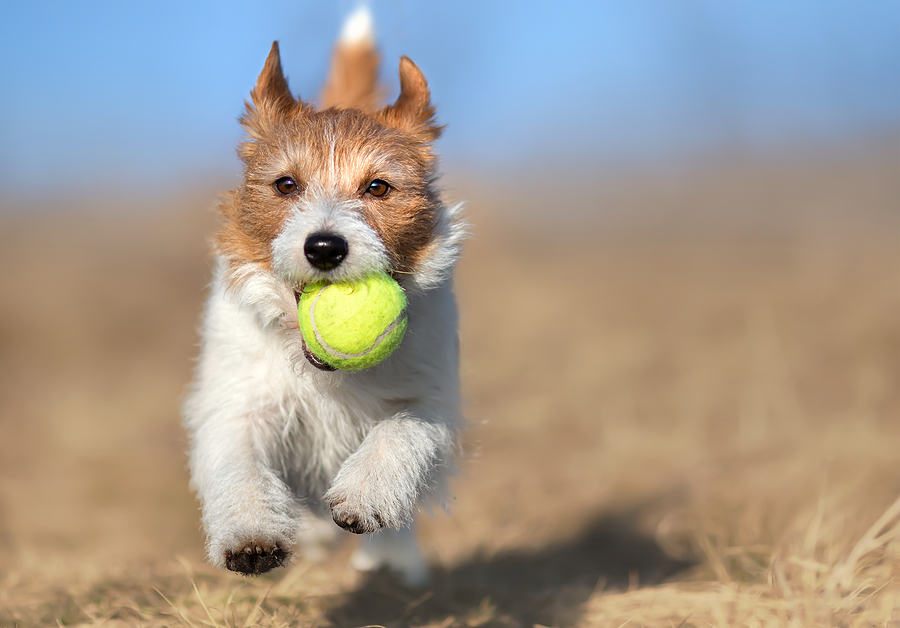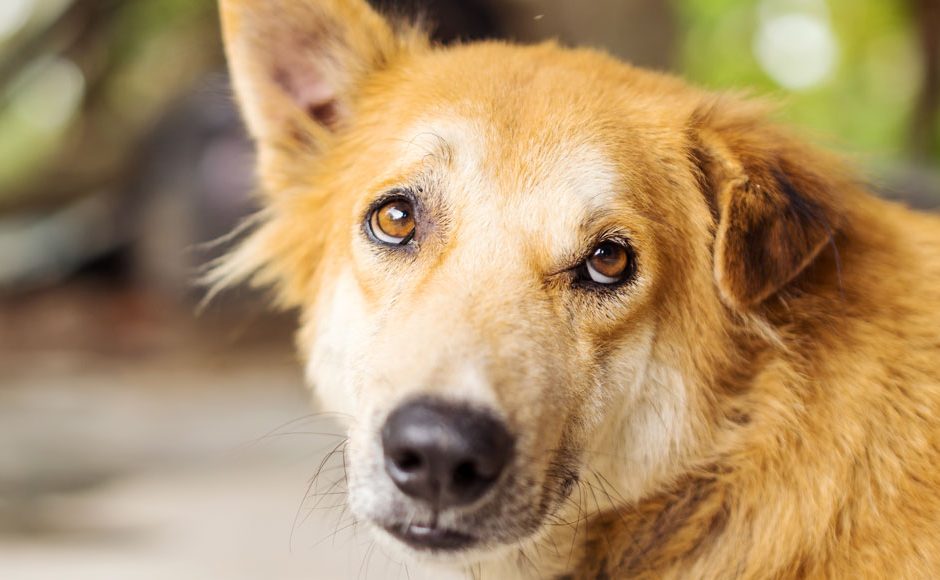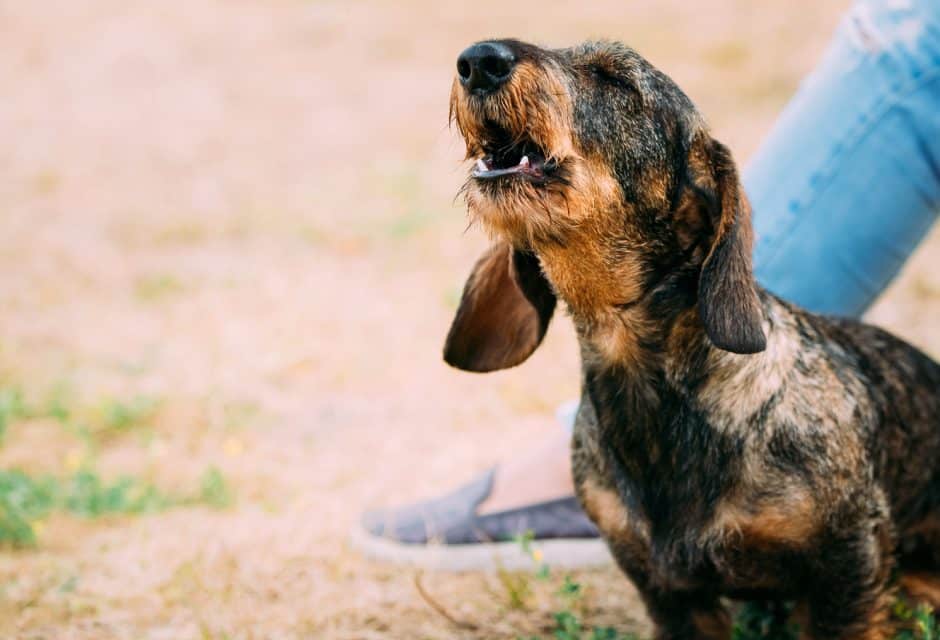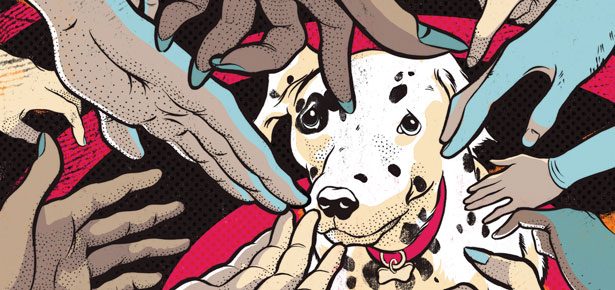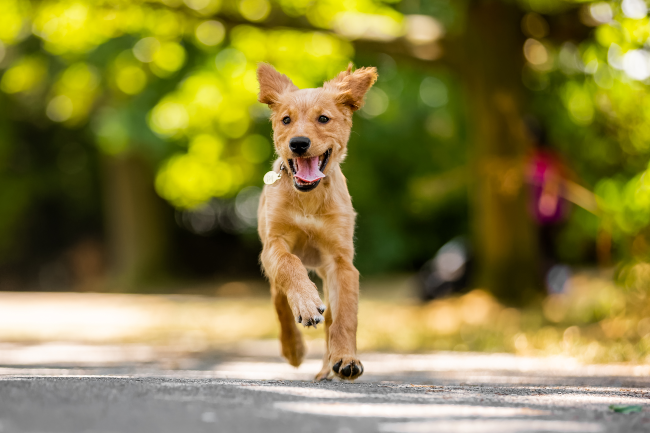
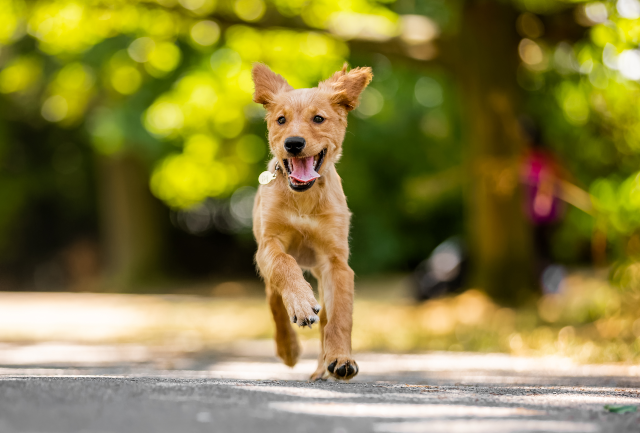
Does Your Dog Need a Behavioural Chill Pill?
How to Calm an Overly Exuberant Dog
Is your dog overly exuberant during play? Does he turn into a non-stop jumping bean when you come home? Could you sometimes swear that he’s learned to levitate? If so, your dog may be suffering from ODS: Over-exuberant Dog Syndrome. Okay, I’m kidding about it being an actual syndrome but for owners it certainly can seem like a serious affliction. Let’s talk about what might cause this all-too-common condition and what you can do to get a handle on it.
The whole issue of over-exuberance boils down to energy that needs to be expended. If your dog is an active breed (a Labrador Retriever, Dalmatian, or Jack Russell Terrier, for example), an adolescent, prone to spontaneous bursts of energy, or a combination of these things, there is a seemingly endless well of energy that needs to be channeled into acceptable outlets.
Providing daily exercise that is appropriate for your dog’s age, breed, and physical condition is a must. And don’t underestimate the power of giving your dog ample exercise before a training session—it can make all the difference in your dog’s ability to focus and learn. In addition, encouraging mental stimulation in the form of treat toys to roll or excavate, puzzle toys, and training will go a long way toward wearing out your overly perky pup.
Photo: bigstock.com/Reddogs
In specific situations where an overabundance of energy can be problematic, such as jumping up when grandma comes to visit, it helps to install an “off” switch. Believe it or not, you can actually teach your dog to go from crazed to calm with a simple training exercise. First, grab a tug toy and begin to play with your dog in a fairly calm manner. You are setting him up to succeed by not being too wild too soon. After a few seconds of mild tugging, freeze in place, making sure not to move your hands at all. Keeping your hands together at abdominal level will help. Now the hard part—just wait. Don’t say a word. Look down at the floor and stay perfectly still. Your dog might sit, especially if that is one of his default behaviours. If not, that’s okay too.
What you’re waiting for is him to have all four paws on the floor and not be lunging for the toy. Once he’s sitting or standing calmly, say, “Good! Take it” and continue the game. His reward for being calm and backing off is the resumption of the game. After a number of repetitions, when you’re sure you can predict the calm response, it’s time to attach a verbal cue. This time, stop tugging, assume your still stance and calmly say, “Chill.” This cue is a bit different than “Leave it” as it will be generalized to other situations, whereas “Leave It” normally means you want your dog to back away from a specific object. As your dog gets the hang of this game, increase the difficulty level by making the tug game faster and more exciting.
Once your dog understands the concept of “Chill,” apply it to other situations. When you come home and your dog not only wants to greet you but is just over the top and unrelenting in his enthusiasm, stand still and calmly say, “Chill.” Wait for him to calm down before rewarding him with your attention. By meeting your dog’s physical and mental needs, and also practicing this training exercise, your crazed canine will soon become a manageable champion of chill.
Nicole Wilde is an award-winning author of ten books on canine behaviour. Her books, seminar DVDs, and Wilde About Dog blog can be found at nicolewilde.com.
Looking for surefire ways to wear out your peppy pup? Click here for all the Modern Dog approved picks!
Join the newsletter and never miss out on dog content again!
"*" indicates required fields
By clicking the arrow, you agree to our web Terms of Use and Privacy & Cookie Policy. Easy unsubscribe links are provided in every email.
